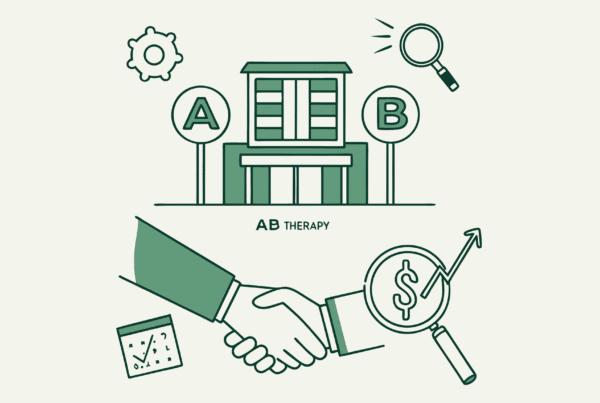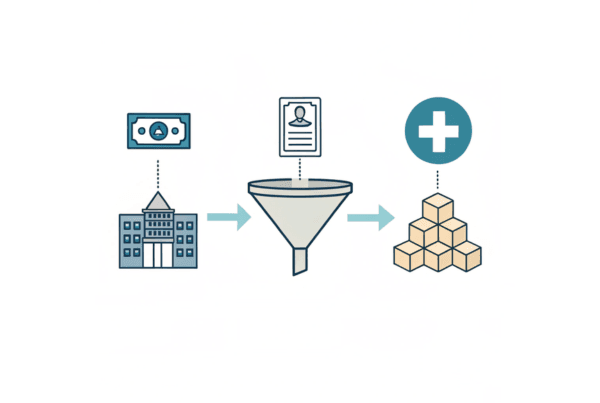Selling your pediatric physical therapy practice is one of the most important financial decisions you will ever make. For practice owners in Charleston, the current market presents unique opportunities. This guide provides a clear overview of the key factors to consider, from understanding your practice’s value to navigating the sale process. Making the right moves now can protect your legacy and maximize your return.
The Market for Pediatric PT Practices
The decision to sell is personal. But the value you receive is driven by the market. Right now, the market for pediatric physical therapy is strong, both nationally and here in the Lowcountry.
A Strong National Outlook
The therapy sector is experiencing significant growth. The overall U.S. physical therapy market was valued at nearly $60 billion in 2024. More specifically, the pediatric segment is growing at a rapid pace, with a projected compound annual growth rate of 8.4%. This growth attracts attention from a wide range of buyers, from regional health systems to private equity groups looking for stable, profitable practices. This level of interest means more options for sellers who are properly prepared.
The Charleston Advantage
This national trend is amplified in Charleston. The Lowcountry’s growing population of young families creates a high and sustained demand for specialized pediatric services. Your practice is not just a local healthcare provider. It is a valuable asset in a desirable, high-growth region. Buyers see Charleston as a strategic location and are often willing to pay a premium to enter or expand within the market.
Key Considerations for Charleston Owners
Beyond the market trends, a buyer is purchasing the unique business you have built. Your practice27s story is told through its operational and financial strengths. Buyers will look closely at your stable referral sources, whether from local pediatricians or partnerships with institutions like MUSC. They will also assess the quality of a strong clinical team and any specialized services you offer that set you apart from the competition.
Your financial health is another key piece. Consistent revenue, healthy profit margins, and a diverse payer mix all contribute to a higher valuation. It is not just about the numbers on a P&L statement. It is about demonstrating a well-run business with a trusted reputation in the Charleston community. Properly presenting these elements is a critical part of the sale process.
Market Activity: What’s Happening Today?
Charleston27s competitive landscape is active. This is a sign of a healthy, desirable market. We see several key trends shaping how pediatric physical therapy practices are being sold today.
- Increased Buyer Interest. It is not just other local practices looking to expand anymore. Sophisticated buyers from outside the region, including private equity-backed groups, are actively seeking opportunities in the Lowcountry. They are attracted to the area’s growth and the stability of healthcare services.
- A Focus on Well-Run Practices. These buyers are not looking for fixer-uppers. They want practices with efficient operations, a great team, and a strong reputation. A practice with clean financials and a clear growth plan will command the most attention and the highest value.
- The Importance of a Competitive Process. With more buyers in the market, you have more options. However, you only get the best deal if buyers have to compete for it. Running a structured, confidential process ensures you can compare multiple offers and choose the partner who best aligns with your financial and personal goals.
The General Sale Process
Selling your practice follows a structured path. It typically begins with a comprehensive valuation to understand what your practice is worth in the current market. From there, we prepare confidential marketing materials that tell your practice27s story and highlight its strengths. We then discreetly approach a curated list of qualified buyers to generate interest. Once offers are received, you move into negotiations and due diligence. This is a critical phase where a buyer will verify your financial and operational information. Proper preparation here can prevent unexpected issues. The final stage involves legal documentation and closing the transaction.
How Is Your Practice Valued?
Determining your practice’s value is not about a simple rule of thumb. Sophisticated buyers value your practice based on its true profitability and future potential. The key metric is Adjusted EBITDA (Earnings Before Interest, Taxes, Depreciation, and Amortization). Think of it as your practice27s true cash flow, after adding back personal expenses or a higher-than-market owner’s salary. This adjusted number is then multiplied by a figure that reflects your practice’s risk and growth potential. Many factors influence this multiple.
| Factor | Lower Valuation | Higher Valuation |
|---|---|---|
| Provider Reliance | Dependent on a single owner | Associate-driven with multiple therapists |
| Growth | Flat patient volume | Clear path to adding services or locations |
| Systems | Basic bookkeeping | Modern EMR and billing systems in place |
| Referrals | Concentrated from one or two sources | Diverse referral network across the area |
An accurate valuation is the foundation of a successful sale. It ensures you go to market with a defensible price that captures the full value you have built over years of hard work.
Planning for What Comes Next
The transaction is not the end of the journey. Planning for a smooth transition is just as important as negotiating the price. This involves working with the new owner to ensure continuity of care for your patients and stability for your staff. Many owners stay on for a period to help with the transition. A well-defined plan protects your legacy and the community you have served.
There are also important financial considerations. The structure of your sale has major implications for your after-tax proceeds. Furthermore, some deals offer opportunities to retain a stake in the new, larger company through rollover equity. This can provide a second financial benefit down the road. Thinking through these “day after” scenarios ahead of time gives you more control over your future.
Frequently Asked Questions
What is the current market outlook for pediatric physical therapy practices in Charleston, SC?
The market for pediatric physical therapy practices in Charleston, SC is strong, driven by national growth trends and the area’s growing population of young families. This high demand makes practices in Charleston valuable assets, often commanding premium prices from buyers looking to enter or expand in the region.
What are key factors buyers consider when purchasing a pediatric physical therapy practice in Charleston?
Buyers focus on stable referral sources from pediatricians or institutions like MUSC, a strong clinical team, specialized services offered, consistent revenue, healthy profit margins, and a diverse payer mix. These elements demonstrate a well-run practice with a trusted reputation, enhancing the practice’s value.
How is the value of a pediatric physical therapy practice determined?
The value is primarily based on Adjusted EBITDA, which reflects the practice’s true cash flow after adjustments. This figure is multiplied by a factor considering the practice’s risk and growth potential. Factors influencing valuation include provider reliance, growth opportunities, the sophistication of systems, and referral network diversity.
What is the general sales process for selling a pediatric physical therapy practice?
The process includes a comprehensive valuation, preparation of confidential marketing materials, approaching qualified buyers, receiving and negotiating offers, due diligence, and finalizing legal documentation and closing. Proper preparation during each step is critical for a successful sale and smooth transition.
What should practice owners in Charleston consider regarding post-sale transition?
Owners should plan for continuity of care for patients and stability for staff, often staying on temporarily to assist with the transition. Financial planning is important to maximize after-tax proceeds and evaluate options like rollover equity, which can offer ongoing financial benefits and control over their future.



